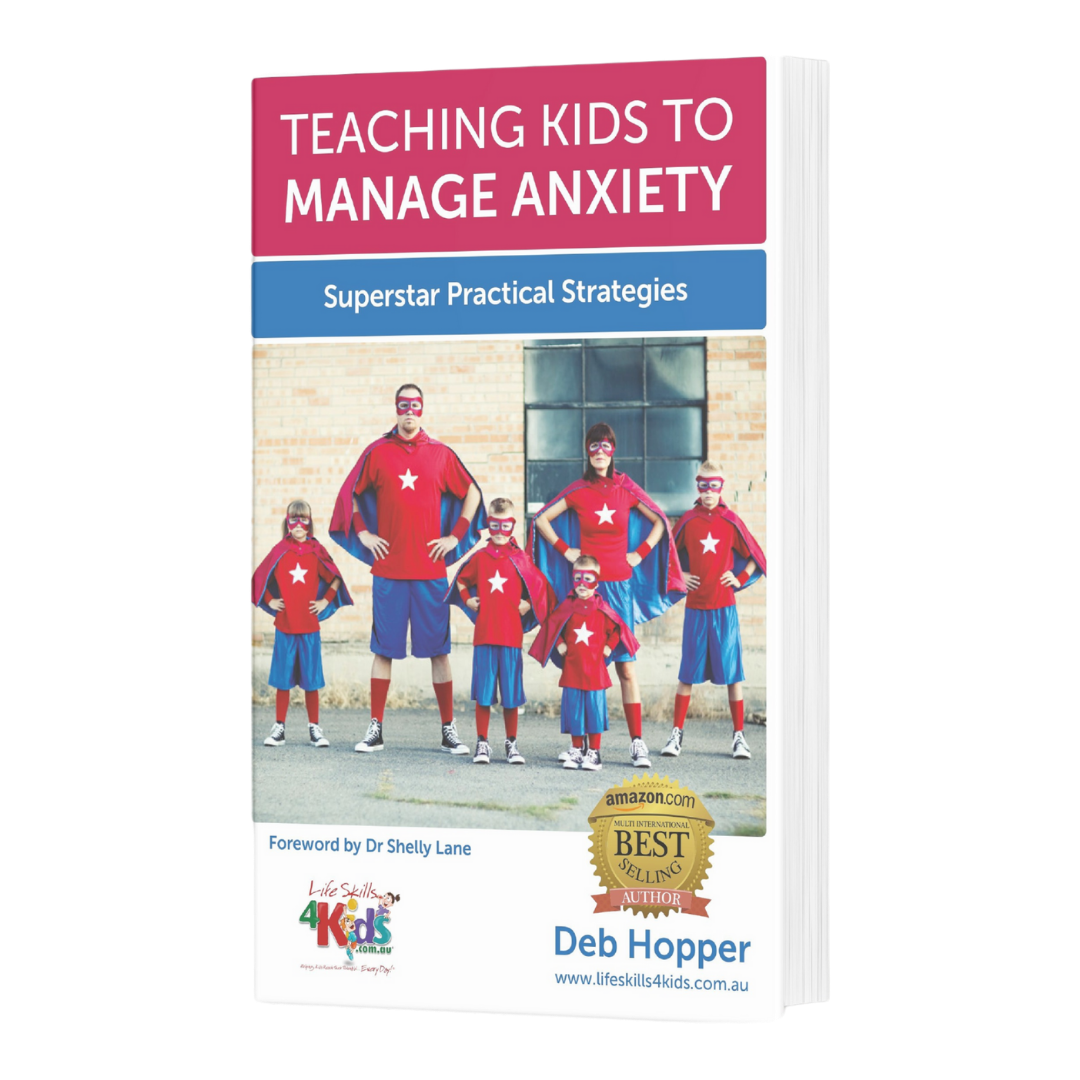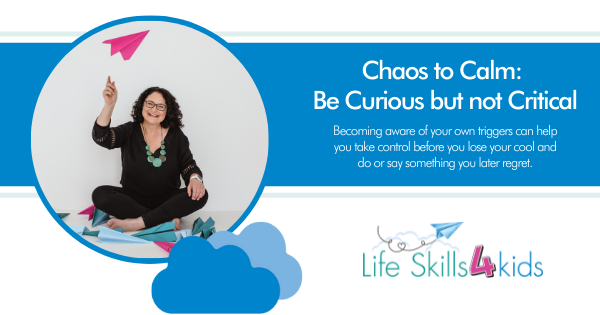You can feel it happening again. Despite your repeated, reasonable requests, your child is STILL not ready, and you need to leave for your appointment in five minutes or you’ll be late. The anger building inside you is about to vent all over your infuriatingly dreamy child. A torrent of angry words is on the tip of your tongue at the infuriating sight of your child playing on the computer with one sock on, unbrushed hair, and no pants.
But then you stop, take a deep breath, and calmly leave the room.
How is this possible?
Calm begins with self-awareness
If you can relate to the above scenario, don’t worry, you’re not alone! Most parents are familiar with the frustration of children that won’t listen or get upset when big emotions are involved.
The good news is that there are strategies you can use to take control of your own reactions to situations that push your buttons, and it begins with self-awareness.
Self-awareness is critical to restoring calm to a volatile situation because as the adult on the scene, you’re the leader in situations that involve big emotions. Children mirror emotions from trusted adults such as parents, so if you’re upset, it is likely that your child will also become upset or it can cause an escalation if your child is already upset.
It’s important to note that many parental triggers stem from things that happened in the past. If you were shamed or bullied or called names in a particular situation, the memories of the past are often triggered when your child is in a similar situation. Therefore, the problem is usually not the current situation, but memories of the past that cause an inappropriate reaction or an overreaction. This is a big topic and deserves its own post, but it’s worth noting because it can help to recognise where your anger or other negative emotions are coming from.
Signs to watch for
Becoming aware of your own triggers can help you take control before you lose your cool and do or say something you later regret. Check out the list below for some tips to help you spot the warning signs:
- Feelings of anger or rage that are out of proportion to the situation
- An awareness of similar past situations and the feelings associated with them
- Building irritation or tension when your child does something you don’t like
- Feelings of hurt, disappointment, sadness or upset when your child says or does something
- Pent-up feelings of explosive anger ready to erupt
- A desire to physically hurt or control your child
- Feeling that everything is out of control
Why does staying calm matter, anyway?
When a child is struggling with big emotions, is out of control, misbehaving, or otherwise pressing our buttons, it’s critical to remain calm. There are a few reasons for this.
As mentioned, children mirror the emotional states and reactions of trusted adults such as parents. The best way to avoid an escalation of a situation is to remain calm and give the child the chance to process their big emotions without adding big adult emotions into the mix. A child who is already struggling with dysregulation doesn’t need the added pressure of an emotional overreaction from an adult. When an adult is able to stay calm, it helps the child to process the situation and more quickly return to their normal baseline instead of the situation escalating until it gets out of hand.
Children also need to see that it’s possible to handle big emotions without losing control. This is especially the case for children who already struggle with emotional or mental challenges. A calm adult is a good model to follow, and adults benefit too because they don’t say or do something they later regret.
Children have a crucial need to feel safe, especially children with challenges. They need to know that they can trust an adult to stay calm and consistent no matter what else is happening. This gives them a “landing place” where they can rely on stability and safety regardless of the situations around them. Kids who feel safe are not spending all their time and energy dealing with perceived threats or feelings of being unsafe and can learn and function more readily instead. This is a win for everyone, with better behaviour and calm instead of chaos.
Strategies to turn chaos to calm
- Remove yourself from the situation to give yourself some space to calm down
- Go to another location as a “circuit breaker”
- If your child is upset, try taking them to another location while remaining calm
- Remember that feelings are like waves on the shore; they come and go and nothing remains the same
- Movement is a great way for both you and your child to let off steam; try going for a walk, kick a ball around, or go to the park
- Deep breathing is one of the best ways to calm an overwhelmed or emotional body
Check your communication
If you find that you’re getting angry because your child doesn’t listen, try these tips:
- Keep your language and tone of voice neutral
- Make eye contact when speaking to your child so you know they’ve heard
- Ask your child to repeat your words back to you so you know they’ve understood
- Never shame or belittle your child or use unkind names to make yourself feel better or to get back at them
- Reward good behaviour with positive reinforcement such as praise
- Avoid engaging with negative behaviour; it’s best to ignore it
- Establish age-appropriate consequences for misbehaviour (such as the loss of privileges) and be prepared to follow through
- Provide fair warning that there will be consequences and make sure your child understands
You can do this!
As parents, we often fail to give ourselves credit for taking on the world’s hardest job. Just the fact that you’re reading this means that you realise how important your role is and perhaps would like to do things differently. If that’s the case, you’re already amazing!
I’m here to tell you that you can make changes and turn chaos into calm. If you would like to know more about how to do that, you can check out my website, www.lifeskills4kids.com.au for lots of great resources and handy tips. You’ve got this!
Teaching Kids to Manage Anxiety
Kids today are growing up in a fast-paced world where information and opportunity overload can be overwhelming.
Based on many years of clinical experience as an Occupational Therapist, Deb Hopper has been using her Just Right Kids® Model to teach children to communicate and manage their stress and anxiety by:
- Identifying their “body speed”,
- Understanding their stress triggers, and
- Implementing simple strategies to reduce anxiety and stress.
“This is quite simply the best, most comprehensive and practical bookI have ever read to help teach children – and many grownups – how to manage anxiety. It is written in an easy to read way with lots of fabulous graphics. This brilliant book needs to be in every home, every school and every library.” — Parenting author and educator Maggie Dent
Explore
- How the body reacts to anxiety and impacts on our ability to think and get an action plan together
- How to teach your children to identify when their body and mind is anxious, and how to tell you
- Sensory overload and how this can push children into being anxious
- Strategies to reduce screen time that you can start today (because this will help reduce anxiety in your house and make life more peaceful


